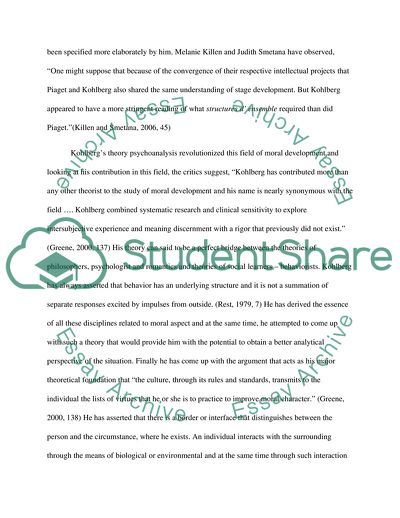Cite this document
(Social And Developmental Psychology: Testing Kohlbergs Theory on Moral Lab Report, n.d.)
Social And Developmental Psychology: Testing Kohlbergs Theory on Moral Lab Report. https://studentshare.org/psychology/1726351-social-and-developmental-psychology-testing-kohlbergs-theory-on-moral-development
Social And Developmental Psychology: Testing Kohlbergs Theory on Moral Lab Report. https://studentshare.org/psychology/1726351-social-and-developmental-psychology-testing-kohlbergs-theory-on-moral-development
(Social And Developmental Psychology: Testing Kohlbergs Theory on Moral Lab Report)
Social And Developmental Psychology: Testing Kohlbergs Theory on Moral Lab Report. https://studentshare.org/psychology/1726351-social-and-developmental-psychology-testing-kohlbergs-theory-on-moral-development.
Social And Developmental Psychology: Testing Kohlbergs Theory on Moral Lab Report. https://studentshare.org/psychology/1726351-social-and-developmental-psychology-testing-kohlbergs-theory-on-moral-development.
“Social And Developmental Psychology: Testing Kohlbergs Theory on Moral Lab Report”. https://studentshare.org/psychology/1726351-social-and-developmental-psychology-testing-kohlbergs-theory-on-moral-development.


